#Sitting #Pretty #Biedermeier #Chair #Design
The Biedermeier era spanned from the late 1810s until the early 1840s and was a time of great cultural and artistic flourishing in Central Europe. This period, marked by a growing middle class seeking stability and comfort, gave rise to a distinctive design style known as Biedermeier, which left an indelible mark on furniture design, particularly chairs. Characterized by its emphasis on simplicity, elegance, and functionality, Biedermeier chair design has left a lasting legacy that continues to influence furniture design to this day.
Origin and Societal Context of Biedermeier Chair Design
The Biedermeier style emerged as a response to the political and social changes sweeping through Europe during the early 19th century. Named after the German name for the middle class, “Biedermeier” furniture was born out of a desire for more modest, comfortable, and practical furniture among the rising middle class.
The Biedermeier era emerged in the aftermath of the Napoleonic Wars and the Congress of Vienna, a time of political and social upheaval. The burgeoning middle class, composed of merchants, professionals, and civil servants, sought refuge from the uncertainties of the outside world within the confines of their homes. This desire for comfort, coupled with a sense of cultural nationalism, shaped the design ethos of the era.
Biedermeier chair design drew inspiration from a variety of sources, including Neoclassical and Empire styles, as well as traditional folk art. This fusion of influences resulted in chairs with clean lines, minimal ornamentation, and emphasis on functionality.
Features of the Biedermeier Chair
Biedermeier chairs were known for their elegant yet understated designs. One of the most iconic Biedermeier chair designs is the “loop chair,” which features a distinctive loop-shaped backrest. This design not only provided support for the back but also added a touch of sophistication to any room.
For example, this set of loop chairs features a charming “Pretzel” decor that embellishes the backs. Further, they have carved details on the top of the backs to add to the unique character.
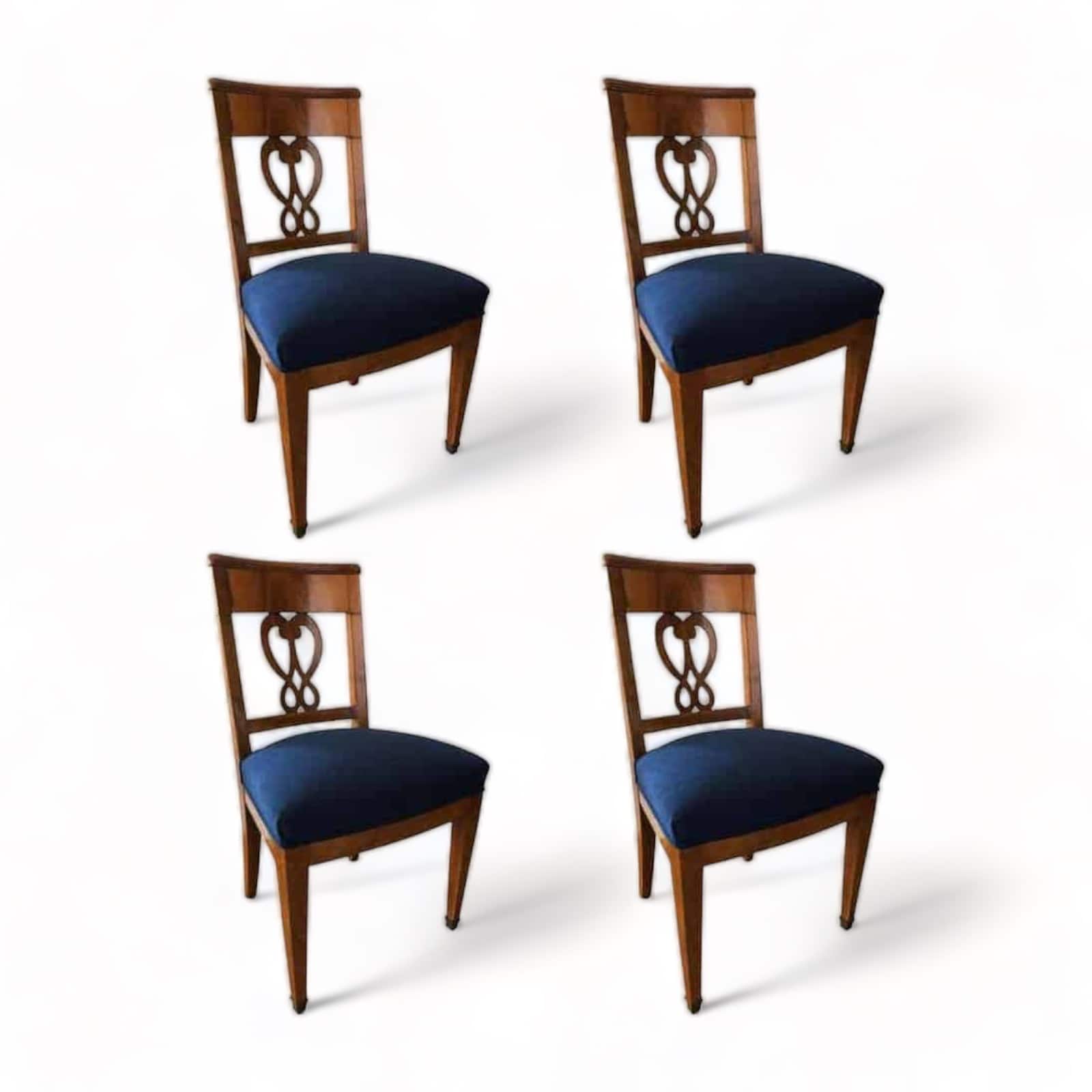
Another popular Biedermeier chair design was the “gondola chair,” which featured a curved backrest reminiscent of a gondola. These chairs had upholstery of luxurious fabrics, such as silk or velvet, adding to their elegance and comfort.
This gondola-style chair features “C” volutes on the armrests’ front and a gracefully curved, veneered backboard that embraces you with comfort.


The Distinctive Backs of Biedermeier Chairs
The backs of Biedermeier chairs were often a focal point of their design, showcasing a variety of elegant and distinctive shapes. One of the most iconic features of Biedermeier chair backs is the use of curved or rounded shapes, which provided both visual interest and ergonomic support. These unique back designs were a hallmark of Biedermeier chair design, contributing to the style’s overall elegance and charm. In this set of chairs, the back shows a very unique interlacing ebonized C-design.
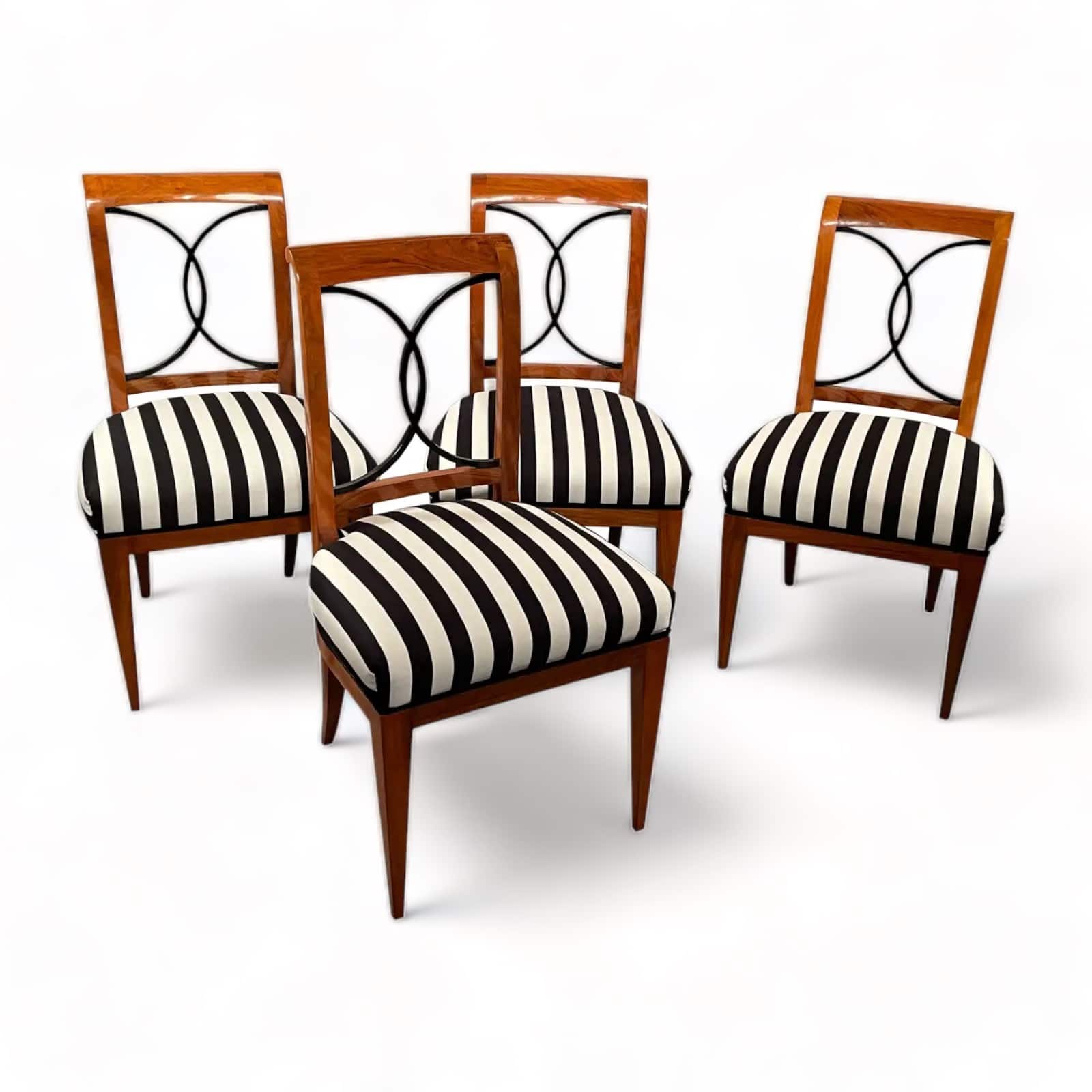

Danhauser Chair
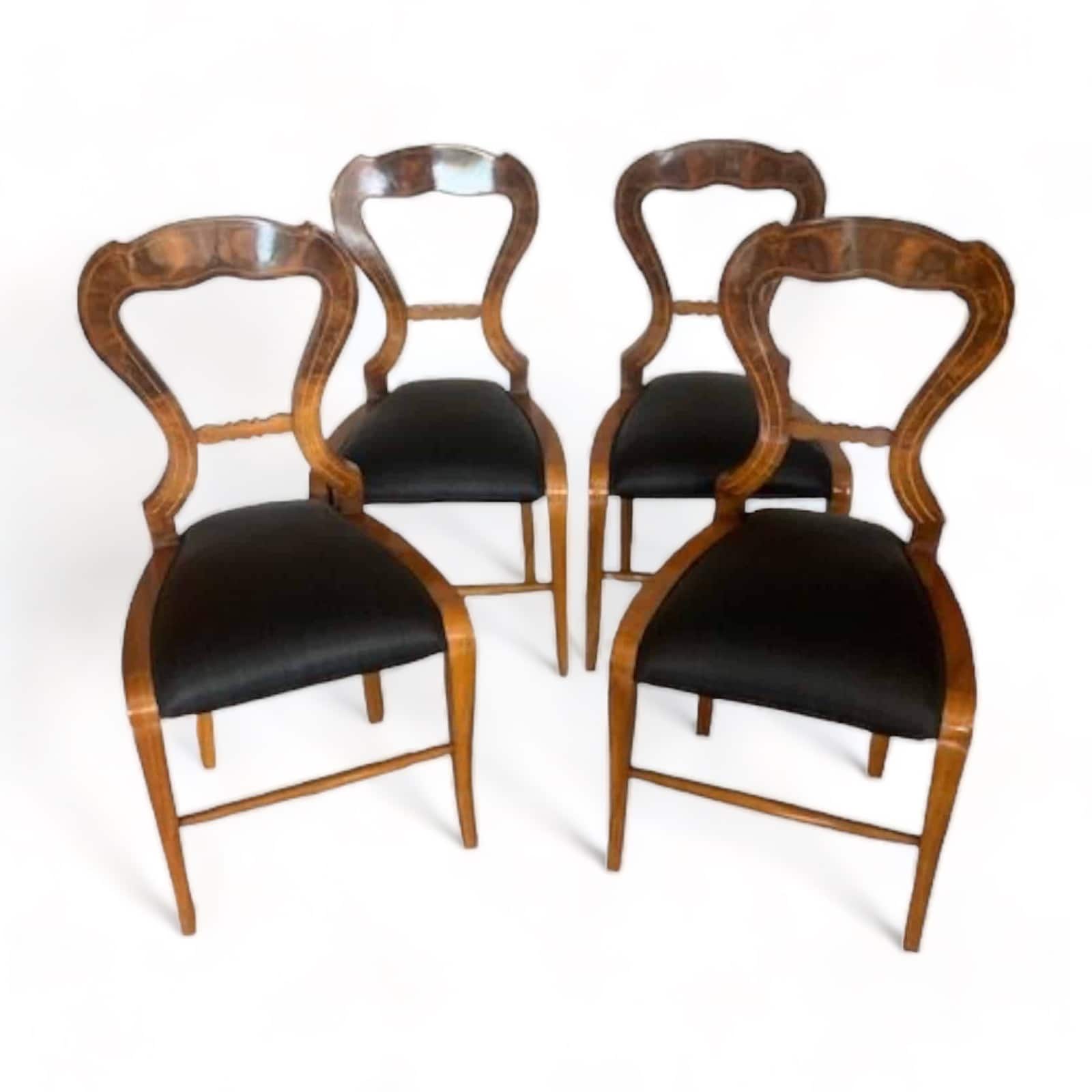

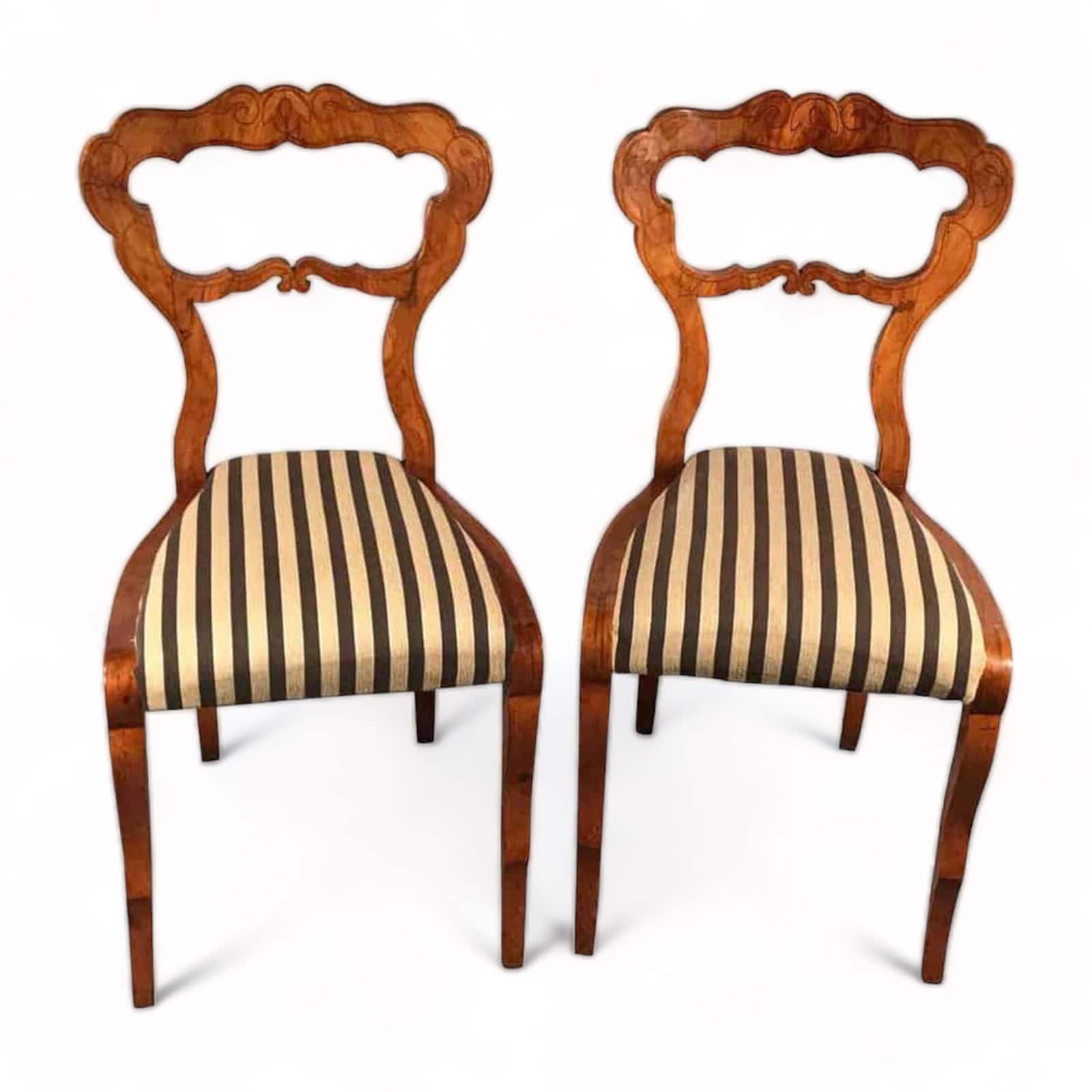

This sketch shows Josef Danhauser’s original chair sketches. They are display today at the MAK museum in Vienna. The MAK is home to the entire body of graphic work from the Danhauser Furniture Factory, and with a total of over 2,500 sketches, drawings, and catalogues, the museum can also boast the most important collection worldwide of furniture-related drawings from the Viennese Biedermeier era.
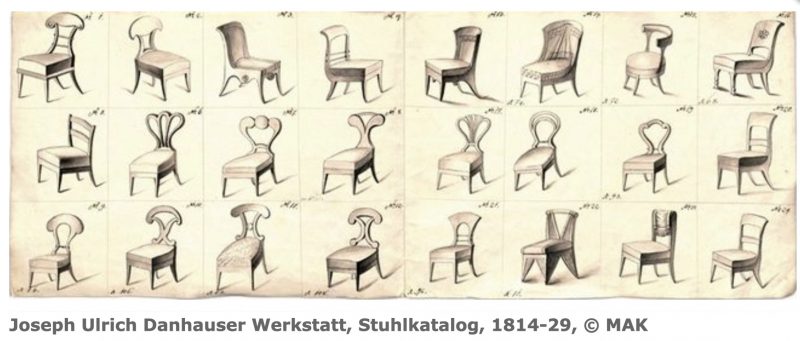

Materials Used
Biedermeier chairs were typically made from solid woods, such as cherry, walnut, or mahogany. This choice reflected the period’s emphasis on craftsmanship and quality materials. These woods are durable and have beautiful grain patterns, adding to the chairs’ aesthetic appeal.
This set of Biedermeier armchairs on Styylish feature a stunning dark walnut veneer.
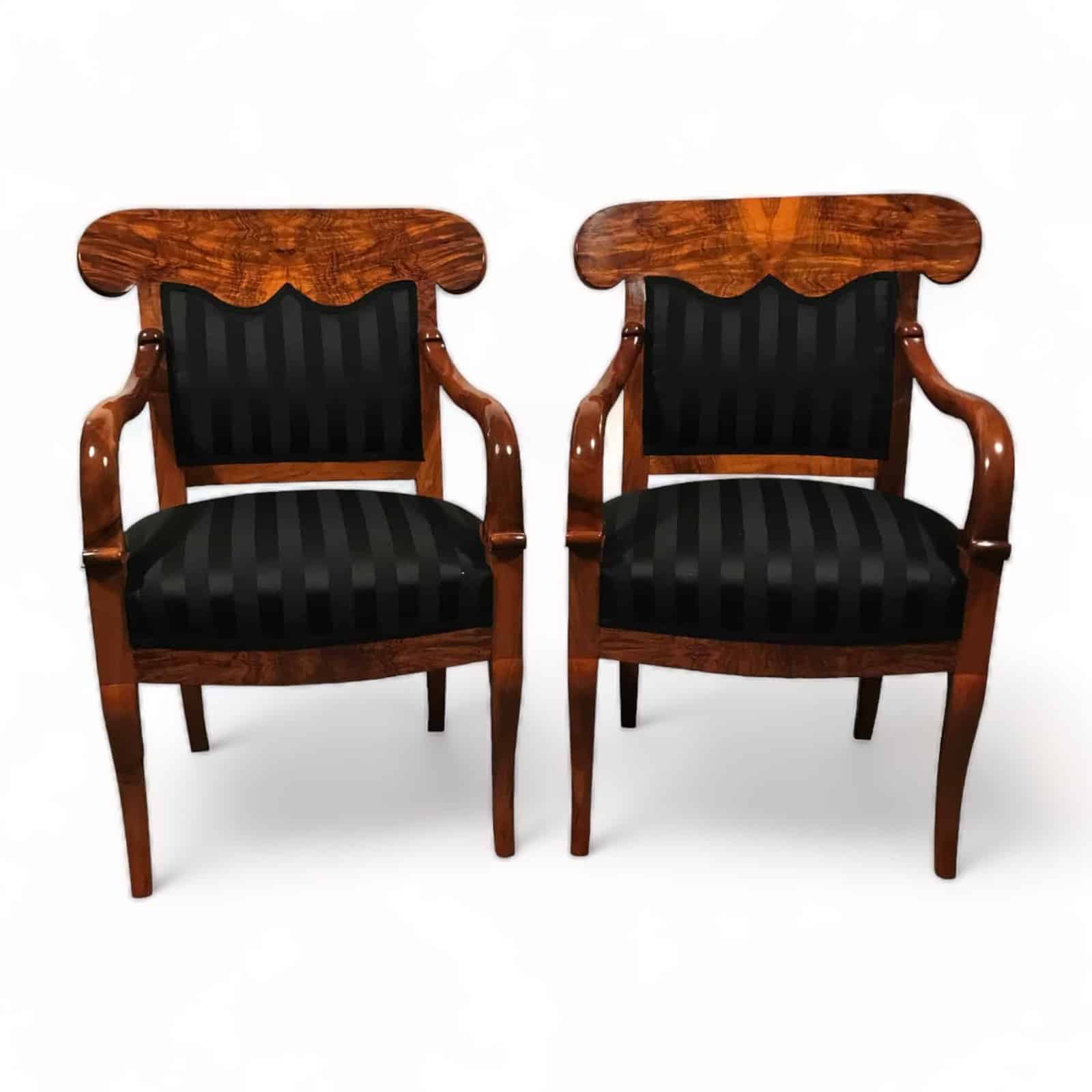

The intricate back and frame of this set of two Biedermeier chairs is made of a lighter and warmer-tone cherry wood.
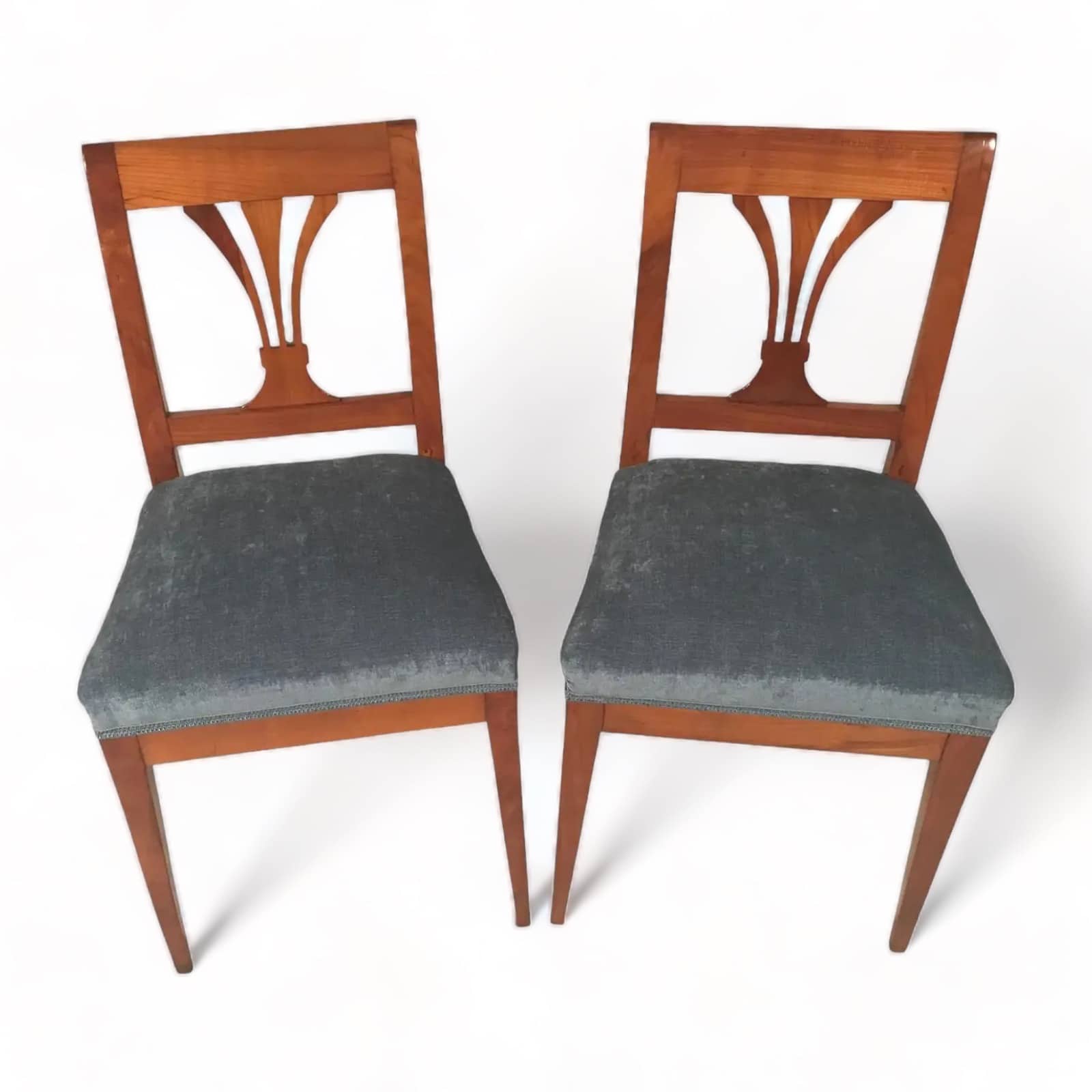

Influence on 20th Century Chair Design
The elegant simplicity of Biedermeier chair design has had a lasting influence on 20th-century chair design. The clean lines and minimal ornamentation of Biedermeier chairs are seen in the work of modernist designers like Marcel Breuer and Ludwig Mies van der Rohe. They sought to create furniture that was both functional and aesthetically pleasing.
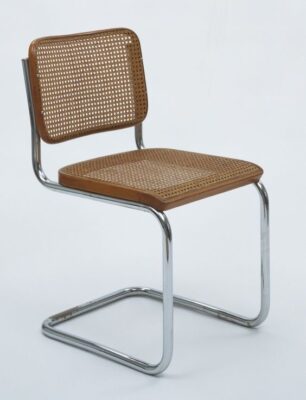

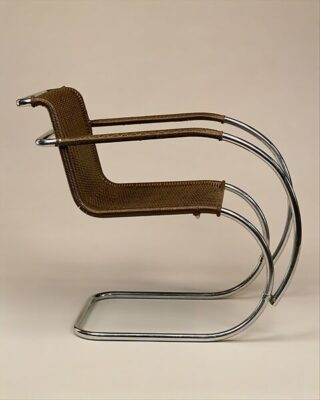

Additionally, the emphasis on quality materials and craftsmanship in Biedermeier chair design has been echoed in the work of designers such as Charles and Ray Eames, who sought to create furniture that was both beautiful and durable.
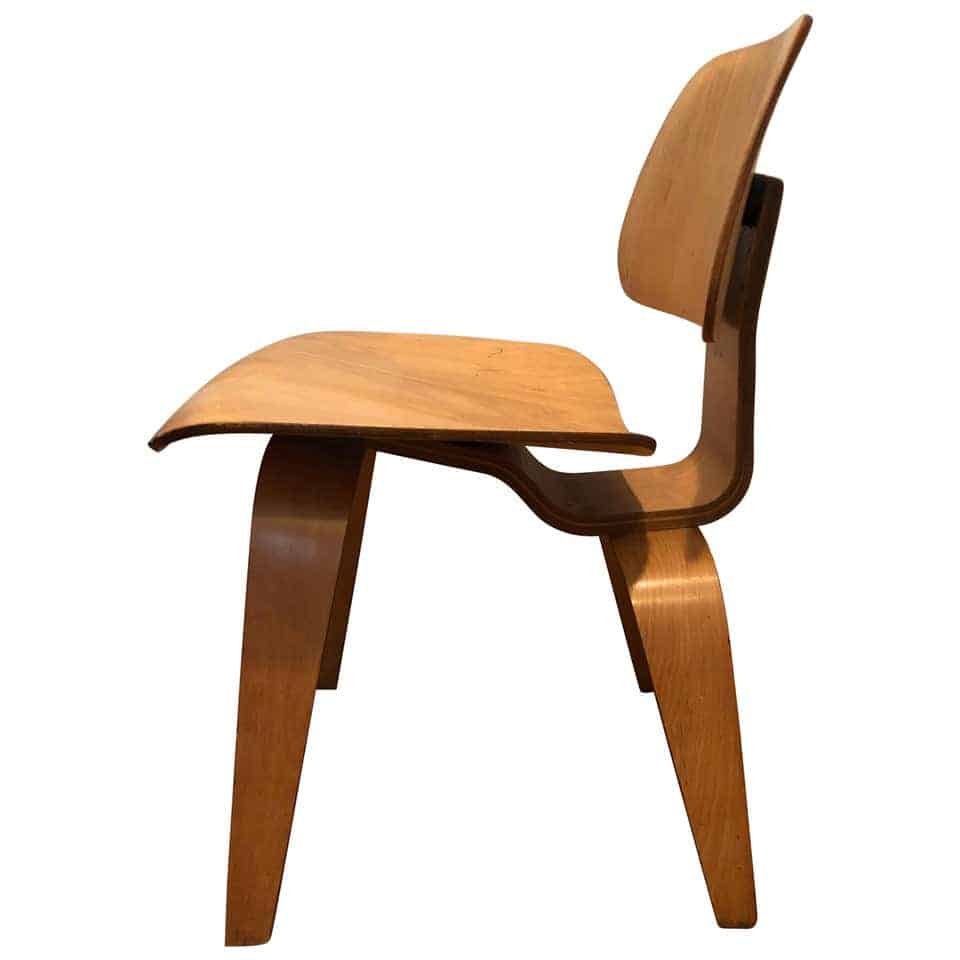

In conclusion, Biedermeier chair design is a testament to the enduring appeal of simplicity, elegance, and functionality in furniture design. Its influence is seen in the work of modernist designers and continues to inspire furniture designers to this day. Styylish proudly boasts a stunning collection of rare Biedermeier chairs that would make a lovely addition to your interior,


